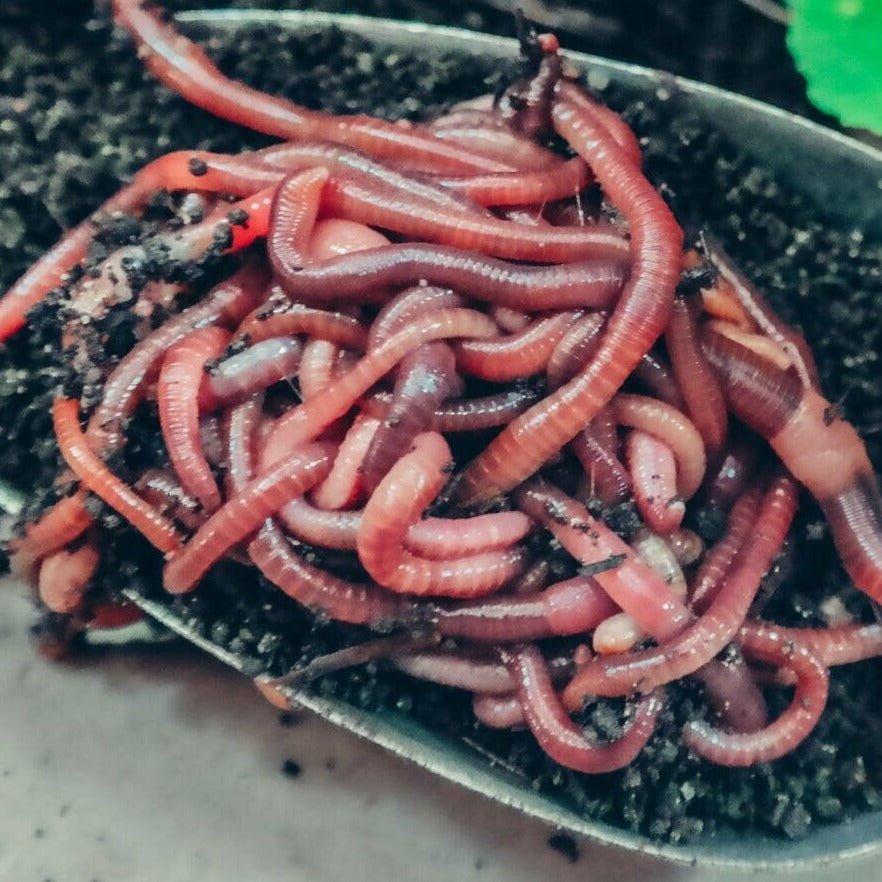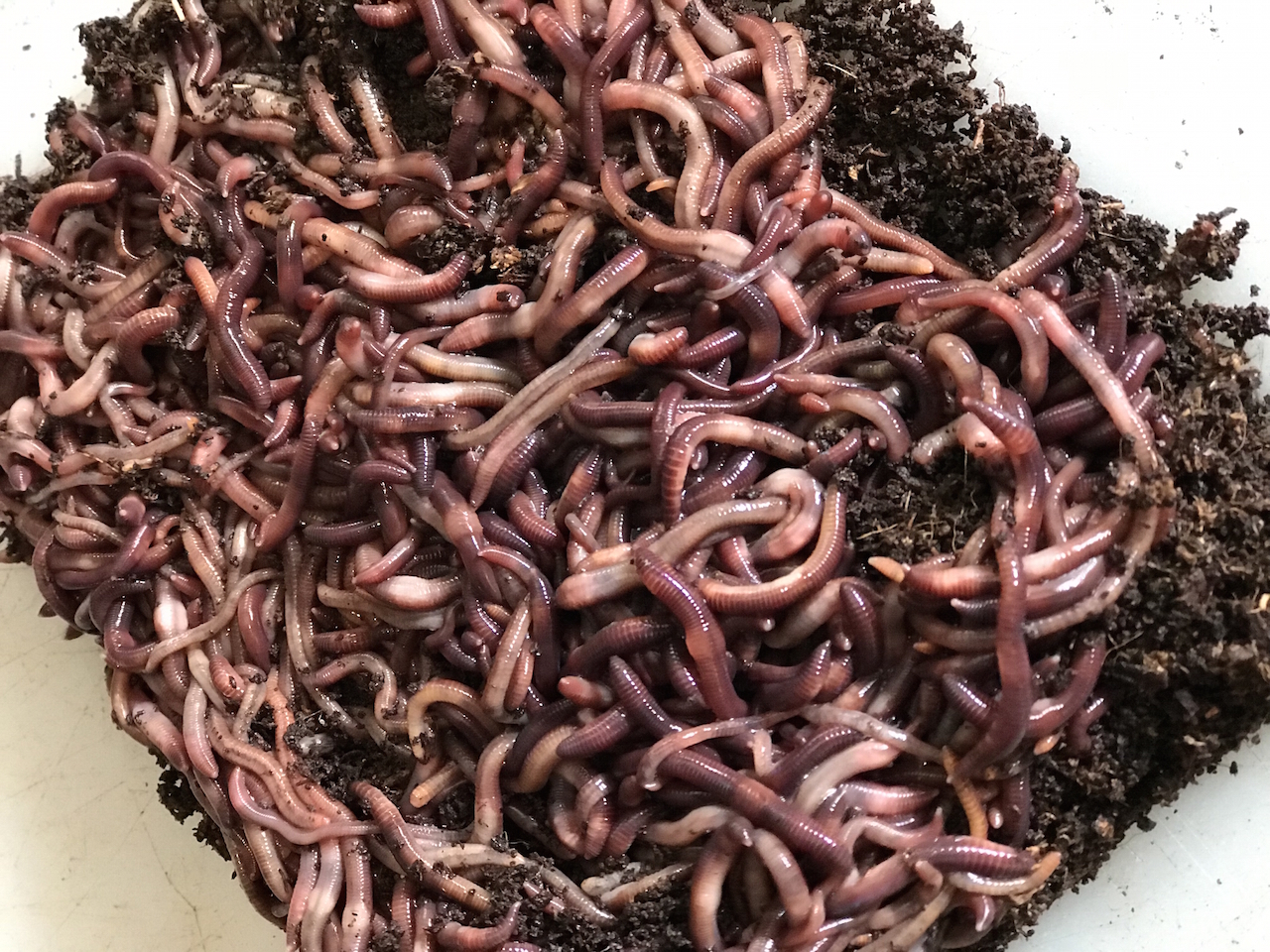Acquire Red Wiggler Worms - Ideal for Composting and Gardening
Acquire Red Wiggler Worms - Ideal for Composting and Gardening
Blog Article
Making The Most Of the Conveniences of Red Wiggler Worms: A Comprehensive Manual for Home Gardeners and Urban Farmers
In the world of lasting horticulture techniques, red wiggler worms stand as unsung heroes, silently transforming organic waste right into nutrient-rich spreadings that can function wonders for soil wellness. By checking out the intricacies of just how to effectively care for and optimize the benefits of red wiggler worms, individuals can open a riches of chances for improving the sustainability and efficiency of their horticulture endeavors.
Recognizing Red Wiggler Worms
Red Wiggler worms, renowned for their reliable composting capacities, are a types of earthworms widely utilized in vermiculture methods. These worms, scientifically referred to as Eisenia fetida, grow in decaying natural product, making them excellent candidates for composting (Red Wiggler Worms). Red Wigglers are starved eaters, with the ability of eating their very own weight in natural waste daily. Their digestive system process breaks down raw material right into nutrient-rich castings, which are an important resource for enriching dirt and advertising plant growth.
One key characteristic of Red Wiggler worms is their reproductive rate. These hermaphroditic animals possess both female and male reproductive organs, permitting them to replicate rapidly under positive conditions. A fully grown Red Wiggler can produce several offspring in a short period, making sure a consistent populace within a composting system.

Establishing Up a Worm Container
When developing a worm bin for vermiculture objectives, appropriate prep work and focus to information are essential for producing a helpful atmosphere for Red Wiggler worms,. Begin by choosing an ideal container for your worm container. This can be a plastic or wooden container with a lid to preserve dampness degrees and shield the worms from light. Make sure that the bin has drain holes at the base to avoid waterlogging.

Place the worm bin in a cool, dark place away from direct sunshine and severe temperature levels. Consistently keep track of the wetness levels, adding water if the bed linen feels half-cracked or dry. Feed the worms a well balanced diet of vegetables and fruit scraps, avoiding citrus fruits, onions, and spicy foods. By following these steps, you can establish a thriving worm bin that will efficiently process organic waste into nutrient-rich vermicompost for your garden.
Feeding and Keeping Worms
Making certain a balanced and healthy diet plan is vital for the health and wellness and performance of Red Wiggler worms in a vermiculture system. Red Wigglers are starved eaters, efficient in eating their own body weight in organic issue daily. To keep a thriving worm population, it is vital to provide them with a variety of food scraps such as vegetables and fruit peels, coffee grounds, tea bags, and smashed eggshells. It is important to stay clear of feeding them citrus fruits, onions, garlic, milk products, meat, and oily foods as these can be unsafe to the worms or trigger undesirable odors in the bin.
Proper moisture degrees are also crucial for the well-being of Red Wiggler worms. By diligently checking their diet regimen, dampness, and ecological conditions, home garden enthusiasts and urban farmers can maintain a efficient and healthy and balanced Red Wiggler worm population for composting purposes.
Gathering Worm Castings
To effectively draw out nutrient-rich worm castings from visit this page the vermicompost, an organized harvesting procedure is vital for taking full advantage of the composting advantages. The first action in collecting worm castings is to motivate the worms to move to one side of the container.
After the spreadings have been gathered, it is essential to separate any kind of remaining worms from the castings to prevent hurting them throughout storage space or application. One efficient method is to create conical piles of spreadings under intense light. Worms will intuitively move away from the light, enabling easy separation and removal.
Last but not least, the gathered worm spreadings need to be kept in a great, dark, and completely dry area to maintain their top quality and efficiency as a nutrient-rich dirt amendment. By adhering to these steps, home garden enthusiasts and metropolitan farmers can make the most of the benefits of red wiggler worms in their vermicomposting systems.
Utilizing Worm Castings in Gardening
The incorporation of nutrient-rich worm spreadings into yard soil can significantly boost plant development and overall dirt wellness. Worm castings, also referred to as vermicast, are a natural fertilizer created by red wiggler worms as they damage down raw material. These castings are rich in important nutrients like nitrogen, phosphorus, potassium, and useful microbes that promote plant growth and enhance dirt structure.
When using worm castings in horticulture, it is necessary to mix them completely into the dirt or utilize them as a leading clothing around plants. The slow-release nature of worm castings guarantees a stable supply of nutrients to plants over time, reducing the danger of nutrient leaching and advertising lasting soil fertility. In addition, worm castings aid enhance dirt oygenation, water retention, and microbial activity, creating a healthy setting for plant origins to prosper.

Final Thought
In final thought, the application of red wiggler worms in home horticulture and city farming can considerably benefit soil health and wellness and plant growth. see By comprehending just how to set up and keep a worm bin, feed the worms appropriately, and gather their nutrient-rich castings, garden enthusiasts can take full advantage of the benefits of these earthworms.
In the realm of sustainable horticulture techniques, red wiggler worms stand as unrecognized heroes, silently transforming natural waste right into nutrient-rich spreadings that can function wonders for soil health.When establishing a worm container for vermiculture look at this now objectives, correct prep work and interest to detail are necessary for producing a favorable environment for Red Wiggler worms. The initial action in gathering worm castings is to encourage the worms to migrate to one side of the container. Worm castings, also known as vermicast, are an all-natural plant food produced by red wiggler worms as they damage down organic matter. By understanding how to establish up and maintain a worm bin, feed the worms properly, and harvest their nutrient-rich castings, gardeners can maximize the benefits of these earthworms.
Report this page